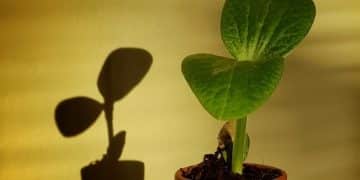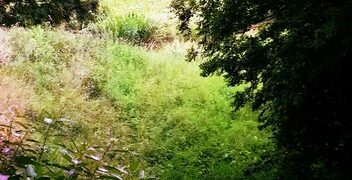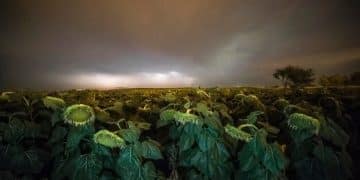Climate Change’s Impact on US Pollinators: A Deep Dive
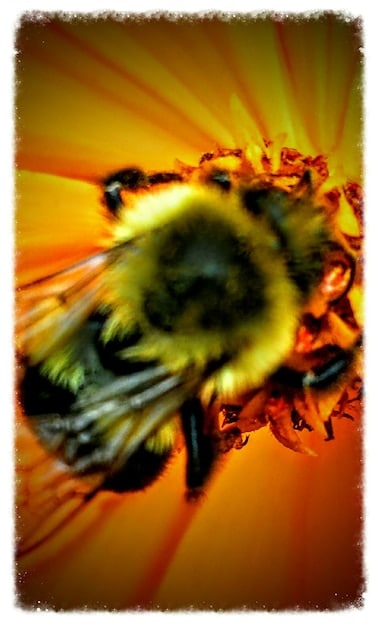
Climate change is profoundly altering the distribution and abundance of pollinators across the US, driven by shifts in temperature, precipitation patterns, and the timing of plant flowering, posing significant threats to ecosystems and agricultural productivity.
The intricate dance between plants and pollinators is a cornerstone of our ecosystems and agricultural systems. But how will climate change affect the distribution and abundance of pollinators in the US? This question looms large as environmental shifts increasingly disrupt these vital natural balances.
understanding the vital role of pollinators
Pollinators, from bees and butterflies to birds and bats, play an indispensable role in maintaining biodiversity and supporting human food systems. They facilitate the reproduction of over 75% of the world’s flowering plants and approximately 35% of global food crops. Their activities are not merely a biological curiosity; they are a fundamental ecological service with immense economic implications.
In the United States, the value of insect pollination to agriculture is estimated to be billions of dollars annually. Crops such as almonds, apples, blueberries, and cranberries are highly dependent on these unsung heroes. Beyond agriculture, pollinators are critical for the health of wild plant communities, which in turn provide habitat and food for countless other species, ensuring functional ecosystems.
the diversity of pollinators in the US
The US is home to an incredible array of pollinator species, each contributing uniquely to the complex web of life. While honey bees often take the spotlight due to their agricultural importance, native bees, comprising thousands of species, are equally, if not more, crucial for the pollination of native plants and many crops.
- Native Bees: Solitary and social species like bumblebees, mason bees, and leafcutter bees are highly efficient pollinators, often specializing in particular plant types.
- Butterflies and Moths: While less efficient than bees, they contribute significantly, especially during their nocturnal foraging, and are important indicators of ecosystem health.
- Other Insects: Beetles, flies, and wasps also perform vital pollination services, often overlooked but collectively significant.
- Vertebrate Pollinators: Hummingbirds, bats (especially in the Southwest), and even some small mammals contribute to pollination, particularly of specific plant species adapted for their visitations.
Understanding this diversity is key to appreciating the potential widespread impacts of climate change. A threat to one group of pollinators can have cascading effects throughout the ecosystem.
The intricate relationships between pollinators and plants have evolved over millennia, creating finely tuned mutualistic systems. Any disruption to these systems, such as those imposed by climate change, can have profound and often irreversible consequences. Therefore, safeguarding these vital species is not just an ecological imperative but an economic and societal necessity.
direct impacts of climate change on pollinator physiology and behavior
Climate change is not a distant threat; its effects are already being observed on pollinator populations across the US. The direct physiological and behavioral responses of pollinators to altered environmental conditions are a primary concern.
Rising global temperatures, a hallmark of climate change, directly affect pollinator metabolism, activity levels, and reproductive cycles. Many insect pollinators are ectothermic, meaning their body temperature depends on external conditions. Elevated temperatures can push them beyond their optimal foraging ranges, leading to reduced activity or even heat stress mortality.
temperature and metabolic stress
Increased temperatures can heighten metabolic rates, requiring more energy expenditure for basic life functions and potentially shortening lifespans. This can also lead to increased water loss, particularly for smaller insects, making them more vulnerable to dehydration. For example, some bee species are highly sensitive to thermal stress, impacting their ability to fly and collect pollen and nectar efficiently.
Changes in precipitation patterns, including more frequent droughts or intense rainfall, also pose significant risks. Drought can reduce the abundance and quality of floral resources, limiting food availability for pollinators. Conversely, excessive rainfall can physically impede foraging activities and damage delicate wings, further stressing populations.
altered phenology and asynchrony
One of the most critical direct impacts is the alteration of phenology – the timing of biological events. Warmer temperatures cause many plants to flower earlier in the season. However, pollinators may not adjust their emergence or activity times at the same rate, leading to a “phenological mismatch” or asynchrony.
- Early Flowering: Plants bloom before their primary pollinators emerge from hibernation or migration, leaving both without their essential partner.
- Reduced Foraging Opportunities: If pollinators emerge too late, they miss peak bloom periods, leading to nutritional deficits and reduced reproductive success.
- Disrupted Life Cycles: The timing of diapause (a period of suspended development) or migration in many pollinator species is cued by temperature or day length, which are now becoming less reliable indicators.
This desynchronization can be devastating. A pollinator unable to find sufficient food during critical developmental stages will likely have reduced fitness or fail to reproduce. Similarly, plants that are not pollinated successfully will produce fewer seeds, impacting future generations of plants and, consequently, the food sources for pollinators.
These direct physiological and behavioral changes underscore the fragility of pollinator populations in the face of rapid climate shifts. Adaptability is key, but the speed of current climate change may outpace the evolutionary capacity of many species, leading to declines and localized extinctions.
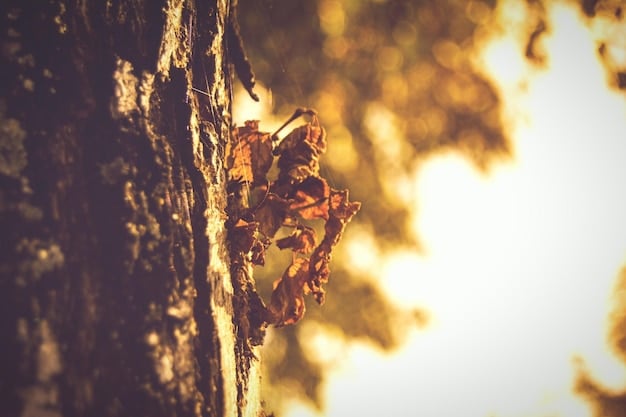
habitat degradation and range shifts
Beyond direct physiological effects, climate change intricately weaves into broader ecological patterns, leading to significant habitat degradation and forcing species to shift their geographical ranges. These changes present formidable challenges for pollinator survival and distribution.
As temperatures rise and precipitation patterns become erratic, the quality and availability of suitable pollinator habitats are diminishing. Many pollinator species require specific types of floral resources and nesting sites, and changes in climate can render these habitats unsuitable. For instance, increased frequency and intensity of wildfires, often exacerbated by climate change, can destroy vast swathes of pollinator habitat.
extreme weather events and habitat loss
The US is experiencing more frequent and severe extreme weather events, including prolonged droughts, intense heatwaves, and severe storms. These events directly impact pollinator habitats:
- Droughts: Reduce the overall abundance of wildflowers and nectar-producing plants, leading to food scarcity for pollinators.
- Heatwaves: Can cause plants to wilt and die prematurely, or reduce the production of nectar and pollen.
- Flooding: Can destroy ground-nesting sites for many bee species and wash away floral resources.
Furthermore, the cumulative effects of these events, combined with ongoing land-use changes like urbanization and agricultural expansion, lead to fragmented landscapes. Fragmented habitats make it harder for pollinators to find food, mates, and suitable nesting sites, isolating populations and reducing their genetic diversity.
geographic range contractions and expansions
Another profound impact is the alteration of species’ geographic ranges. As local climates become unsuitable, many species attempt to move towards higher latitudes or altitudes to find cooler temperatures. This phenomenon is particularly evident in the US, with species shifting northward or uphill.
While some species may successfully shift their ranges, others face significant barriers. Urban areas, vast agricultural monocultures, and geographical features like mountain ranges can impede migration. Species that are poor dispersers or those with highly specific habitat requirements are particularly vulnerable to range contractions and are at higher risk of localized extinction.
For pollinators, this means that even if suitable climatic conditions exist elsewhere, the lack of continuous habitat corridors or the absence of necessary host plants along the migration path can prevent successful range expansion. This can lead to a “climate squeeze,” where species are caught between their shrinking optimal habitat and an inability to reach new ones.
The combination of direct habitat destruction and the challenges of range shifts paints a concerning picture for pollinator populations. Understanding these large-scale ecological changes is essential for developing effective conservation strategies that provide resilient landscapes for these critical species.
impacts on plant-pollinator interactions and ecosystem services
The intricate interdependencies within ecosystems mean that changes affecting pollinators inevitably cascade through plant communities and, by extension, disrupt vital ecosystem services. The balance of nature relies heavily on these interactions, and climate change is fundamentally altering them.
As pollinators decline in abundance or shift their distribution, the plants that depend on them for reproduction face severe challenges. Many plant species are pollinator-limited, meaning their reproductive success is directly tied to the presence and activity of their specific pollinators. A reduction in pollinator visits can lead to decreased fruit and seed set, directly impacting plant populations and overall biodiversity.
altered plant reproduction and genetic diversity
When plant-pollinator interactions are disrupted, the potential for successful reproduction diminishes. This can result in:
- Reduced Seed Production: Fewer seeds mean a smaller next generation of plants, leading to population declines and potentially local extinctions.
- Lower Fruit Yields: Important for wild ecosystems (providing food for wildlife) and agricultural systems (impacting human food supply).
- Decreased Genetic Diversity: If only a few individuals or specific pollinator types are available, genetic exchange among plant populations can be limited, making them less resilient to future environmental stresses.
This negative feedback loop can accelerate ecosystem degradation. A decline in plants leads to less food and habitat for pollinators, further exacerbating their decline, creating a downward spiral that is difficult to reverse.
cascading effects on ecosystem services
Ecosystem services are the many benefits that humans receive from ecosystems. Pollination is a key regulating service, underpinning many others:
- Food Security: Direct impact on the availability and diversity of food crops for human consumption.
- Biodiversity Maintenance: Directly supports the reproduction of wild plants, which form the base of many food webs, providing habitat and food for herbivores, carnivores, and decomposers.
- Ecosystem Stability: Diverse plant communities, supported by pollinators, are generally more stable and resilient to disturbances. Their loss can lead to simplified ecosystems that are more vulnerable to invasive species or disease outbreaks.
- Water Quality and Soil Health: Healthy plant communities help stabilize soil, prevent erosion, and filter water, all of which are indirectly supported by effective pollination.
The cumulative effect of these disruptions is a less resilient and less productive natural world. From forests to prairies to agricultural fields, the subtle yet profound changes in plant-pollinator dynamics present a critical threat to the functioning of the entire ecosystem. The web of life is intricately connected, and pulling one thread, such as the decline of pollinators, can unravel significant portions of the fabric.
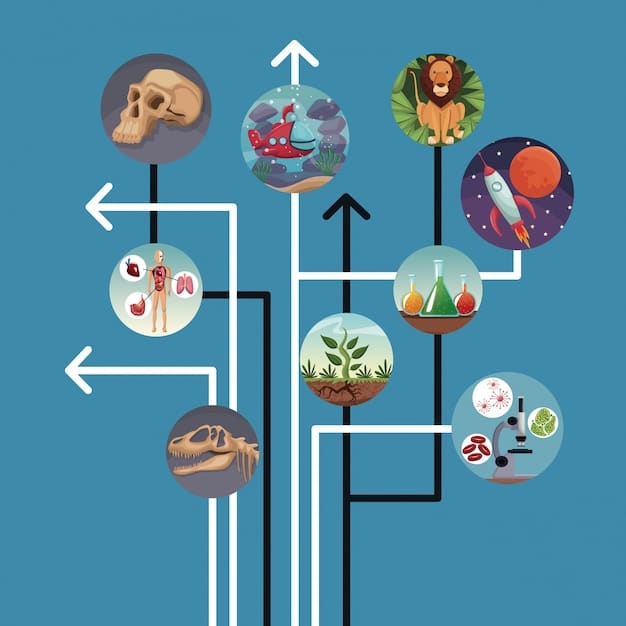
vulnerability of specific pollinator groups in the US
While climate change poses a broad threat, not all pollinator groups are equally vulnerable. Some species or guilds are particularly susceptible due to their specific biological characteristics, narrow ecological niches, or limited adaptive capacity. Understanding these differential vulnerabilities is crucial for targeted conservation efforts across the US.
Bumblebees (Bombus spp.), for example, are a group of particular concern. Many bumblebee species are adapted to cooler climates and are experiencing significant range contractions from their southern limits in the US. Their robust bodies are efficient at foraging in colder temperatures, but this adaptation makes them highly sensitive to warming trends.
bumblebees: a focus of concern
Bumblebee vulnerability stems from several factors:
- Narrow Thermal Tolerances: Many species simply cannot tolerate sustained high temperatures, impacting their foraging efficiency and survival.
- Short Tongues and Specific Foraging: Some species specialize in plants with specific flower morphologies, making them vulnerable to phenological mismatches if those plants are affected.
- Limited Dispersal Capacity: Compared to some other migratory insects, bumblebees generally have shorter dispersal distances, hindering their ability to track suitable climates effectively.
Research indicates that several North American bumblebee species have experienced significant declines and range retractions, aligning with climate model predictions of warming trends.
migratory insects: navigating new challenges
Migratory pollinators, such as the monarch butterfly (Danaus plexippus), face a different set of climate-related challenges. Their epic migrations across the US depend on precise timing and the availability of resources along their migratory routes and in their overwintering grounds.
Climate change disrupts these complex annual journeys:
- Altered Breeding Season Cues: Warmer temperatures can prompt earlier breeding, leading to a disconnect with milkweed availability (their host plant) later in the migration.
- Extreme Weather on Migration Routes: Increasingly severe storms, droughts, and heatwaves can decimate migrating populations, reducing the number that successfully reach their destinations.
- Impacts on Overwintering Sites: For western monarchs, changes in California’s climate, including drought and wildfire, threaten the specific conditions needed in their overwintering groves. For eastern monarchs, altered winter conditions in Mexico can be detrimental.
While honey bees (Apis mellifera) are highly managed and thus somewhat buffered from certain climate impacts, they too are not immune. Their health can be compromised by altered floral resource availability, increased pest and disease pressures exacerbated by climate stress, and disruptions to hive thermoregulation under extreme heat. The complex interplay of climate with other stressors like habitat loss and pesticide use creates a formidable challenge for all pollinator groups, but specific vulnerabilities demand tailored and urgent conservation responses.
mitigation and adaptation strategies for pollinator conservation
Addressing the profound impacts of climate change on pollinators requires a multi-faceted approach, combining strategies to mitigate greenhouse gas emissions with local and regional adaptation initiatives. Protecting these vital creatures is not just an ecological goal but an essential step for food security and ecosystem resilience.
The most fundamental mitigation strategy is to reduce greenhouse gas emissions globally. While this requires broad-scale systemic changes, individual and community efforts to lower carbon footprints contribute to slowing the rate of climate change, giving ecosystems and species more time to adapt. Investing in renewable energy, improving energy efficiency, and promoting sustainable land use are critical components.
enhancing and restoring pollinator habitats
At an adaptation level, creating and enhancing pollinator habitats is paramount. This involves ensuring a continuous supply of diverse floral resources throughout the year and providing adequate nesting and overwintering sites. Strategies include:
- Native Plantings: Prioritizing native plant species that are well-adapted to local conditions and provide optimal food sources for local pollinators. This also helps in creating more climate-resilient landscapes.
- Habitat Connectivity: Establishing “pollinator corridors” or networks of connected habitats (e.g., roadside verges, urban green spaces, farm edges) to facilitate movement and genetic exchange, helping species shift their ranges if necessary.
- Reducing Pesticide Use: Minimizing the use of harmful pesticides, particularly neonicotinoids, which can directly harm pollinators and weaken their ability to cope with climate stress.
Farmers can play a significant role by implementing pollinator-friendly farming practices, such as planting pollinator strips, diversifying crops, and adopting integrated pest management techniques.
research, monitoring, and policy development
Continued scientific research and monitoring are essential to understand how pollinators are responding to climate change and to identify the most effective conservation responses. This includes tracking population trends, studying phenological shifts, and assessing the resilience of different species.
Policy development at local, state, and federal levels is also crucial. This can involve:
- Funding Conservation Programs: Allocating resources for habitat restoration, research, and educational initiatives.
- Land-Use Planning: Integrating pollinator needs into urban and rural planning to protect and create green infrastructure.
- Climate Change Adaptation Plans: Including specific targets and strategies for pollinator conservation within broader climate adaptation frameworks.
Adaptive management—continually monitoring the effectiveness of conservation actions and adjusting them as new information becomes available—will be key to ensuring that efforts remain relevant and impactful in a changing climate. Ultimately, a concerted effort from individuals, communities, scientists, and policymakers is needed to build a more resilient future for pollinators and the ecosystems they support.
the role of citizen science and public awareness
In the face of complex challenges like climate change, every individual has a part to play. For pollinator conservation in the US, citizen science initiatives and increased public awareness are becoming incredibly powerful tools, bridging the gap between scientific research and community action.
Citizen science engages the public in scientific research, often through data collection. For pollinators, this can involve observing and recording sightings of bees, butterflies, and other species, identifying flowering plants, or monitoring specific habitats. This collective effort generates vast amounts of valuable data that would be impossible for professional scientists to collect alone.
how citizen science helps
Citizen science projects contribute significantly to our understanding of pollinator populations and their response to climate change:
- Monitoring Trends: Long-term datasets from citizen scientists can help track changes in pollinator distribution, abundance, and phenology, providing critical insights into how species are responding to warming temperatures and altered seasons.
- Identifying Hotspots and Declines: Local observations can pinpoint areas where pollinators are thriving or, conversely, where they are experiencing significant declines, enabling more targeted conservation efforts.
- Engaging the Public: Direct participation fosters a deeper understanding and appreciation for pollinators, encouraging personal action and advocacy.
Programs like the Monarch Watch, Bumble Bee Watch, or the Great Sunflower Project allow ordinary citizens to contribute directly to scientific knowledge, making them active participants in conservation.
raising public awareness and education
Beyond data collection, increasing public awareness about the plight of pollinators and the impacts of climate change is vital. Many people are unaware of the critical role pollinators play or the severity of the threats they face. Effective communication can inspire action at all levels.
Educational campaigns can highlight simple yet impactful actions individuals can take:
- Planting Pollinator Gardens: Encouraging homeowners, schools, and businesses to plant diverse, native, pollen and nectar-rich plants.
- Reducing Pesticide Use: Educating the public about the dangers of certain chemicals to pollinators and promoting safer alternatives.
- Supporting Local Farmers: Choosing produce from farms that use pollinator-friendly practices.
- Advocating for Policy: Empowering citizens to support policies that protect pollinators and address climate change.
When the public understands the interconnectedness of pollinators, plants, and climate, they are more likely to support conservation initiatives and make environmentally conscious choices. Citizen science and robust educational efforts are not just about gathering data; they are about fostering a collective stewardship that is essential for the long-term survival of pollinators in a changing climate.
| Key Point | Brief Description |
|---|---|
| 🌡️ Climate Impacts | Rising temperatures, altered precipitation, and extreme weather disrupt pollinator physiology and habitat viability. |
| 🔁 Phenological Mismatch | Plants flower earlier, but pollinators may not emerge at the same rate, causing critical food shortages. |
| habitat & Range Shifts | Habitat degradation and fragmentation occur due to climate, forcing pollinators to shift ranges, often with limited success. |
| 🌱 Conservation Actions | Mitigation, habitat restoration, native plantings, and citizen science are vital for pollinator protection. |
frequently asked questions
▼
Climate change primarily affects pollinators through altered temperatures, precipitation, and extreme weather, impacting their physiology, behavior, and the availability of floral resources. This often leads to mismatches between pollinator emergence and plant flowering times, threatening their food supply and reproductive success, along with habitat degradation.
▼
Bumblebees are particularly vulnerable due to their narrow thermal tolerances and limited dispersal capabilities, leading to significant range contractions. Migratory insects like monarch butterflies also face severe challenges, as extreme weather events and disrupted habitat along their routes threaten their epic journeys and overwintering sites.
▼
Climate change impacts agricultural pollination by disrupting plant-pollinator synchrony, reducing pollinator populations, and degrading their habitats. This can lead to decreased fruit and seed production for many crops, threatening food security and farmers’ livelihoods in the US. Sustainable practices are crucial for resilience.
▼
To help affected pollinators, we can plant diverse native species, create connected pollinator habitats, and reduce pesticide use. Supporting policies that mitigate climate change and participating in citizen science initiatives also contribute significantly to understanding and protecting these vital species.
▼
Pollinator conservation is crucial for ecosystems because they facilitate the reproduction of most flowering plants, forming the base of many food webs. Their decline leads to reduced plant diversity, affecting herbivores and carnivores, and compromising essential ecosystem services like soil health, water quality, and overall ecosystem stability, making them less resilient.
conclusion
The question “How Will Climate Change Affect the Distribution and Abundance of Pollinators in the US?” reveals a complex and pressing ecological challenge. From disrupting life cycles through phenological mismatches to degrading vast habitats and forcing range shifts, climate change is undeniably altering the delicate balance of plant-pollinator interactions. The cascading effects on ecosystems, food security, and biodiversity are profound. Yet, while the challenges are immense, the collective efforts of scientific research, targeted conservation strategies, and widespread public engagement offer a beacon of hope. By understanding the vulnerabilities of specific pollinator groups and implementing robust mitigation and adaptation measures, we can work towards a future where these essential species continue their vital work, ensuring resilient ecosystems and a sustainable food supply for generations to come.

